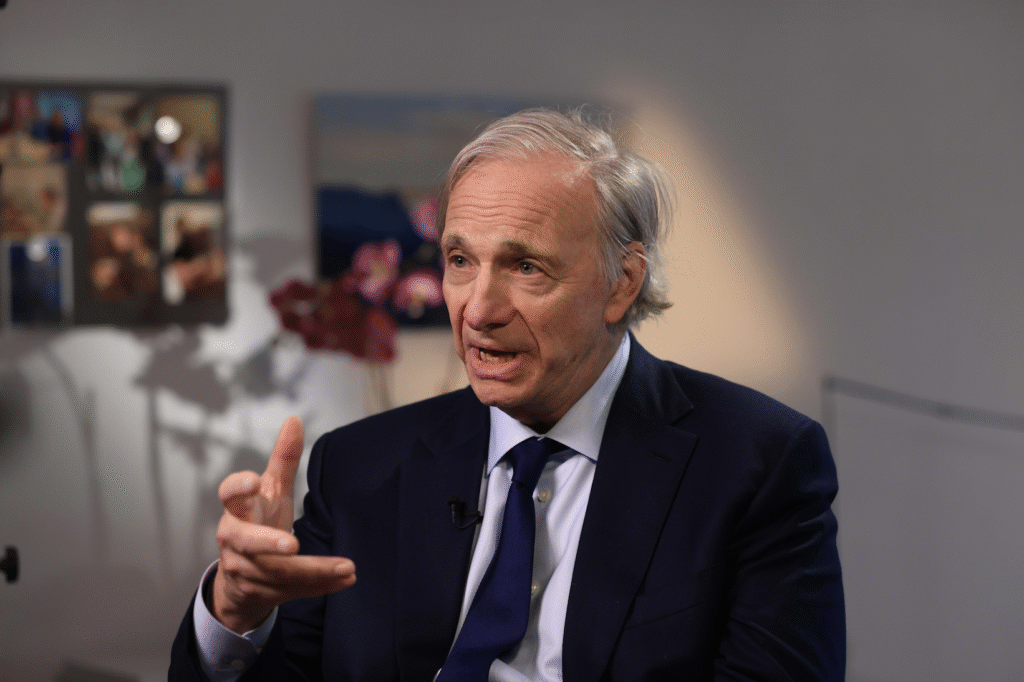Billionaire investor Ray Dalio, founder of Bridgewater Associates and one of the most influential macro thinkers of the modern era, has issued a nuanced message to global investors:
“Don’t sell just because there’s a bubble.”
But he adds an equally important second part — one far more sobering:
Be prepared for structurally low investment returns over the next 10 years.
Dalio’s latest outlook underscores a paradox shaping global markets: asset prices remain historically elevated, yet long-term return expectations are falling. Investors may be tempted to exit out of fear of a bubble, but Dalio argues that such a reaction can be misguided — particularly when the alternatives to equity risk offer little upside.
In essence, he is telling investors:
Stay invested, but reset your expectations. The era ahead may feel far less generous than the decade behind.
A Bubble Isn’t a Sell Signal — Why Dalio Stays Rational When Others Panic
Dalio’s first point is counterintuitive. When most investors hear “bubble,” they instinctively think “sell everything.”
Dalio says this is the wrong reflex.
According to him, markets can stay “bubble-like” far longer than people expect.
Moreover:
- A bubble is not a timing tool
- A bubble does not tell you when the peak will occur
- A bubble does not guarantee an imminent crash
- A bubble may simply reflect excess liquidity and limited alternatives
Dalio highlights that during the dot-com boom, investors who sold too early missed some of the biggest upside months. The same happened during the late-cycle rallies of the 1980s, 1990s, and post-2020 liquidity-driven surges.
His message:
Just because something looks expensive does not mean it cannot become more expensive.
Why Dalio Expects Low Returns Over the Next Decade
While Dalio isn’t advising panic, he is sounding a long-term alarm: investors should prepare for significantly lower returns over the next 10 years compared to the extraordinary gains of the previous decade.
Several structural forces are converging to reshape the investment landscape:
1. High Debt Levels and Rising Fiscal Stress
Global debt levels are at historic highs. In the United States, public debt has surpassed levels seen even during World War II.
High debt tends to:
- slow economic growth
- pressure government budgets
- limit future fiscal stimulus
- weaken long-term investment productivity
Dalio warns that these structural constraints will weigh on future returns across asset classes.
2. Declining Real Interest Rates, Despite Volatile Cycles
Even though central banks have raised rates sharply in recent years, long-term real interest rates remain anchored by:
- slow demographic growth
- technological disruption
- limited productivity improvements
- high global savings pools
Lower long-term real yields reduce the forward return potential of stocks, bonds, and real estate.
3. A More Fragmented Geopolitical Order
Dalio consistently highlights the shift away from U.S.-centric globalization toward a multipolar world marked by:
- U.S.–China rivalry
- trade restrictions
- technological fragmentation
- supply-chain restructuring
- sanctions and currency disputes
Geopolitical fragmentation adds risk premia without adding productivity — leading to weaker long-term returns.
4. Aging Populations and Slowing Workforce Growth
A declining working-age population across the U.S., Europe, China, Japan, and South Korea means:
- lower consumption growth
- reduced innovation momentum
- higher pension and health expenditures
- slower GDP growth
Slower growth translates into lower corporate earnings expansion, weakening future market performance.
5. Valuations Are Already Stretched
Dalio notes that after years of monetary stimulus and asset inflation:
- equities are priced richly
- real estate is expensive in major markets
- private equity returns are compressing
- VC valuations remain inflated
- bond yields may not rise enough to compensate for future inflation
When starting valuations are high, future returns are mathematically lower.
The Dalio Paradox: Stay in the Market — Even If the Future Looks Tough
Dalio’s view combines caution with realism.
He is not bearish in the traditional sense.
He is not telling investors to sell, convert to cash, or hide from markets.
Instead, he is urging investors to:
- stay diversified
- avoid emotional decisions
- temper return expectations
- focus on risk-adjusted strategies
- protect against inflation and currency shifts
- avoid overconcentration in any one asset or geography
Dalio’s framework is built on probabilities, not headlines.
What Investors Should Take Away From Dalio’s Warning
Dalio’s message boils down to three essential insights:
1. Don’t sell in panic — bubbles don’t follow predictable timelines.
Markets can remain irrational far longer than anyone expects.
2. But do recalibrate your expectations — the next decade won’t look like the last.
The golden age of easy money, free liquidity, and artificially boosted returns is fading.
3. Prepare for a world defined by debt, inflation risk, and geopolitical competition.
Returns will be harder earned, not gifted by macro tailwinds.
Conclusion: Not Doom — But Discipline
Ray Dalio is not forecasting collapse.
He is forecasting difficulty — a decade that rewards discipline, intelligence, and risk management rather than blind optimism.
The message is clear:
- The bull market of the past decade was driven by liquidity.
- The next decade will be driven by fundamentals.
- Investors must be smarter, more flexible, and more globally aware.
In Dalio’s view, the coming era is not one of crisis, but one of reality — and reality demands a more thoughtful, strategic approach to investing.
Don’t sell just because fear says the word “bubble.”
But do prepare for a world where returns are earned slowly, not delivered instantly.



